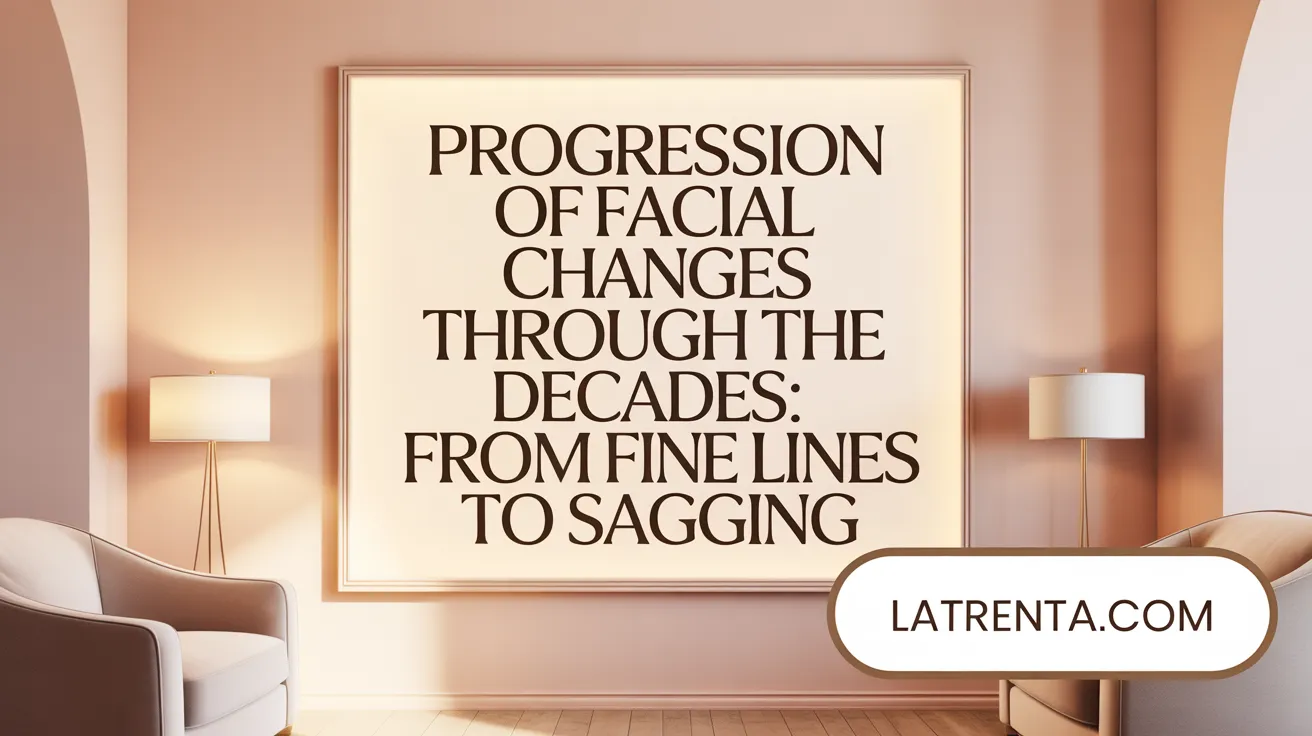Unveiling the Truth Behind Facial Aging and Non-Surgical Treatments
Facial aging is a complex, multifactorial process influenced by biology, environment, and lifestyle. As non-surgical treatments for anti-aging gain popularity, myths and misconceptions abound, leading to unrealistic expectations and confusion. This article unravels the biological realities of facial aging, demystifies common myths, and clarifies the role and limitations of non-surgical treatments compared to surgical options, equipping readers with factual insights for informed decisions.
The Biological Processes Behind Facial Aging

What are the normal biological changes that occur in the skin as we age?
Facial aging is a complex biological process involving multiple changes within the skin's structure. These changes are natural and occur gradually over time.
One of the primary alterations is the thinning of the skin layers. The epidermis, which is the outermost layer, and the dermis, the deeper supportive layer, both become thinner. This results from a decreased rate of cell turnover and reduced activity of epidermal stem cells.
A significant aspect of aging involves the loss of collagen and elastin fibers. Collagen provides strength, while elastin enables skin to stretch and bounce back. As these proteins diminish, the skin loses its firmness and elasticity, contributing to wrinkles and sagging.
Bone and fat also play vital roles in facial aging. Natural loss of facial fat pads causes volume depletion in areas like the cheeks and around the eyes. Simultaneously, bones in the face can undergo resorption, leading to a change in facial contours and providing less structural support.
The skin’s barrier function degrades over time, making it more prone to dryness, irritation, and injury. Sebaceous (oil) and sweat glands become less active, further exacerbating dryness and impairing the skin's ability to regulate temperature.
Moreover, vascular and cellular components decline. There is a reduction in melanocyte activity, which can cause age spots and uneven pigmentation, and a decrease in blood vessels diminishes skin nourishment, affecting healing and a healthy glow.
External factors, especially sun exposure, accelerate these intrinsic aging processes. Ultraviolet (UV) rays promote pigmentation changes, age spots, and increase the risk of skin cancers.
Overall, these biological changes lead to the characteristic signs of aging skin: decreased firmness, loss of volume, irregular pigmentation, fine lines, and a dull, fragile appearance.
When Does Facial Aging Begin? Early Signs and Progression

At what age does facial aging typically begin and when do noticeable changes usually occur?
Facial aging generally starts in the late 20s to early 30s. During this period, subtle signs begin to emerge, such as fine lines around the eyes (crow’s feet) and mouth, along with a gradual decline in skin elasticity. Cellular processes that support skin renewal and collagen production slow down around age 25, making the skin more susceptible to aging.
Environmental factors, especially sun exposure, speed up these changes. Early on, individuals may notice sunspots, uneven pigmentation, or slight dullness, often in their 20s or 30s. As people reach their 40s, more visible aging signs—like deeper wrinkles, sagging skin, and dryness—become apparent due to the ongoing breakdown of collagen and elastin.
By the time individuals reach their 50s and beyond, volume loss becomes more pronounced. This results in thinner skin, hollowing around the cheeks and eyes, and increased sagging, which collectively give the face a more aged appearance. Overall, while minor signs may appear in the late 20s, the progression into more significant and recognizable aging features usually occurs during the 40s and later years.
Numerous factors influence this timeline, including genetics, lifestyle, sun protection, and skincare routines. Early intervention and preventive care can help manage or delay some of these changes, maintaining a youthful look for longer.
Dispelling Myths About Facial Aging and Skincare

What are common myths and misconceptions about facial aging?
Many people believe that all aspects of facial aging are determined solely by genetics or that wrinkles and sagging can be completely prevented with skincare products. However, aging is a complex process influenced not only by heredity but also significantly by environmental factors like sun exposure, pollution, smoking, and diet.
In reality, topical products and facial treatments mainly improve the surface appearance of the skin. They cannot penetrate deep tissues or reverse the natural loss of fat, collagen, and elastin that occurs with age. There is no miracle cream or natural product that can eliminate deep wrinkles or restore lost facial volume. Proper anti-aging strategies should include sun protection, good skincare routines, and, when appropriate, professional procedures such as laser treatments or surgical lifts performed by qualified specialists.
A common misconception is that natural or organic products are safer and more effective. While some natural ingredients can benefit the skin, others may cause reactions, and their efficacy varies widely. It’s important to understand that safe and effective skincare is about the right ingredients, not just natural labels.
What are key facts and myths about anti-aging skincare products?
Effective skincare products often contain ingredients like retinoids, antioxidants, and moisturizers that can help improve skin texture, boost hydration, and reduce fine lines. However, these products do not halt the aging process or erase existing wrinkles completely.
Sun protection remains the most impactful method for maintaining youthful skin. Daily use of broad-spectrum sunscreens with at least SPF 30 shields the skin from UVA and UVB rays that accelerate aging. Interestingly, UV rays can penetrate glass windows and reflect off surfaces, making consistent sun protection necessary even indoors or on cloudy days.
There is a myth that anti-aging skincare can instantly reverse aging or that natural products are inherently safer. In truth, consistent use over months is needed to see visible improvements, and ingredient quality matters more than price or label. Proper cleansing, gentle exfoliation, and the gradual introduction of ingredients like retinol starting in the late 20s help maintain healthy skin.
Understanding that aging results from a mix of genetics and lifestyle factors highlights the importance of protective measures and healthy habits. Avoiding excessive sun exposure, proper skin care, and protecting the skin from environmental damage are critical parts of effective anti-aging care.
Realities and Expectations of Non-Surgical Anti-Aging Treatments

What should people realistically expect regarding the safety and effectiveness of non-surgical anti-aging treatments?
Non-surgical anti-aging procedures are generally safe when performed by qualified and experienced professionals. Most common side effects, such as redness, swelling, or bruising, are temporary and resolve quickly. These treatments can effectively diminish the appearance of wrinkles, restore lost volume, and improve skin texture, offering noticeable facial rejuvenation.
However, it is important to recognize that they do not halt the natural aging process. Results vary based on individual factors, the specific procedures used, and the skill of the practitioner. To achieve a more comprehensive and natural appearance, many patients combine different treatments, such as Botox, fillers, and skin resurfacing.
While serious complications are rare, they can occur if treatments are administered improperly. This underscores the importance of choosing specialists with proper credentials and experience. Overall, non-surgical treatments can boost confidence and improve appearance, but patients should have realistic expectations about their temporary results and the need for ongoing maintenance.
What are some common misconceptions about non-invasive skin rejuvenation procedures?
Many people hold misconceptions about non-invasive skin treatments. A common myth is that these procedures can permanently reverse aging or fully replace surgical facelifts. In reality, they offer gradual improvements, and their effects are usually temporary, requiring repeat treatments to maintain results.
Another mistake is believing such procedures are completely risk-free or involve no downtime. While they are safer and less invasive than surgery, minimal risks like mild swelling or bruising do exist, and multiple sessions are often necessary for optimal results.
Some think that non-invasive treatments are painful. Modern techniques often include comfort-enhancing features, and recovery is typically quick, with most patients resuming normal activities shortly after.
Lastly, there’s a misconception that treatment efficacy depends solely on the procedure itself. The skill of the practitioner and the quality of technology used are crucial factors in success.
Understanding that these treatments are best used as complements to good skincare and healthy lifestyle choices helps set realistic expectations.
Summarized Table of Non-Surgical Treatments
| Procedure Type | Expected Outcomes | Typical Downtime | Longevity of Results | Requirements |
|---|---|---|---|---|
| Botox/Dysport | Softens fine lines and wrinkles | Few hours to a day | 3-6 months | Repeat every few months |
| Fillers | Restores volume, enhances contours | Minimal, same day | 6-18 months | Regular touch-ups |
| Laser Resurfacing | Improves skin texture, reduces spots | 1-2 weeks | 1-3 years | Multiple sessions |
| Chemical Peels | Brightens skin, reduces fine lines | Few days | Months to years | Maintenance treatments |
| Radiofrequency & Microneedling | Tightens skin, stimulates collagen | 1-2 days | 1-2 years | Series of sessions |
This overview shows that non-invasive procedures can effectively enhance appearance but require ongoing care and realistic understanding of their benefits and limitations.
Search Query for Further Research
For more detailed information on safety and myths related to non-surgical facial rejuvenation, search for "non-surgical facial rejuvenation safety and myths."
Comparing Non-Surgical and Surgical Facial Rejuvenation Methods

How do non-surgical facial rejuvenation treatments work and how effective are they compared to surgical options?
Non-surgical facial rejuvenation treatments focus on improving superficial skin concerns and mild to moderate signs of aging. Procedures like Botox, which relax muscle activity to smooth out expression lines, dermal fillers that restore lost volume, laser resurfacing, and chemical peels work by toning, tightening, and smoothing the skin, often with minimal downtime and discomfort.
These treatments are effective for issues such as fine lines, surface scars, uneven pigmentation, and low facial volume. For instance, Botox can soften forehead wrinkles, while fillers effectively address hollow cheeks or under-eye circles. Laser and chemical peels improve skin texture and tone, reducing age spots and superficial wrinkles.
In contrast, surgical options like facelifts provide a more comprehensive approach by addressing the deeper structural components of aging. They involve tightening muscles, removing excess skin, and repositioning fat pads, which results in more dramatic and long-lasting improvements.
Duration and Permanence of Results
Results from non-surgical methods are temporary, typically lasting from a few months up to a couple of years, depending on the treatment and the individual. Maintaining these results often requires regular repeat sessions.
Surgical procedures offer longer-lasting, often semi-permanent or permanent results. A facelift, for example, can provide a youthful appearance for over a decade if combined with good skincare and lifestyle habits.
Recovery Time and Invasiveness
Non-invasive and minimally invasive treatments generally involve little to no downtime. Patients can often return to their daily activities immediately or within a few days. Common side effects include mild swelling, redness, or bruising.
Surgical options like facelifts require a recovery period of about 1-2 weeks to manage swelling and bruising. They involve larger incisions, general anesthesia, and a more extensive healing process.
Suitability Based on Age and Condition
Non-surgical treatments are suitable for younger individuals or those with early signs of aging, such as fine lines and initial volume loss. They are also ideal for patients seeking to maintain a natural look or those who prefer less invasive options.
Surgical procedures are better suited for older patients with significant skin laxity, deep wrinkles, and sagging tissues. The choice depends on the severity of aging signs, overall health, and individual goals.
Combining Approaches
Many patients benefit from a combination of both methods. Non-surgical treatments can complement surgical procedures by refining results, improving skin quality, and maintaining youthful appearance over time.
In conclusion, non-surgical options are effective for mild and moderate concerns with minimal downtime, while surgery offers more profound and longer-lasting rejuvenation. The best approach depends on personal needs, age, and expectations, often under the guidance of a qualified facial rejuvenation specialist.
Holistic Approaches to Facial Aging and Maintaining Results
Why is sun protection important?
Sun exposure is a major factor in skin aging, even on cloudy days or indoors near windows. UVB rays can cause wrinkles, age spots, and skin damage. Applying at least SPF 30 daily helps protect against these effects, reducing premature aging.
How do lifestyle factors influence facial aging?
Healthy habits play a vital role. Avoiding smoking and excessive alcohol, eating a nutritious diet rich in antioxidants, and getting enough sleep can slow aging signs. Protecting skin from environmental pollutants and managing stress are also beneficial.
Why is skincare and ongoing maintenance crucial?
Effective skincare, including moisturizers, retinoids, and sunblock, supports skin health. Regular treatments like microdermabrasion or laser rescues improve skin tone and texture. Consistent care helps prolong youthful results of cosmetic procedures.
What are the psychological benefits of facial rejuvenation?
Feeling good about your appearance can boost confidence, reduce stress, and enhance overall well-being. A natural, refreshed look often fosters positive social interactions and improves self-image, contributing to better mental health.
How accessible and inclusive are facial aging treatments?
Modern procedures are increasingly available to diverse groups, including men and women of all ages and budgets. Non-surgical options like fillers or Botox provide quick, effective enhancements, making facial rejuvenation attainable for many.
Navigating Facial Aging with Knowledge and Realism
Understanding the intricate biological changes of facial aging and the realities surrounding anti-aging treatments empowers individuals to make informed decisions. While non-surgical procedures provide meaningful improvements with safety and convenience, they have limitations and require maintenance. Surgical facelifts remain the gold standard for profound, lasting rejuvenation, especially for advanced aging. Combining appropriate skincare, sun protection, healthy lifestyle habits, and professional treatments—tailored to individual needs—offers the best pathway to aging gracefully with natural-looking results and confidence. By dispelling myths and embracing fact-based approaches, one can achieve balanced expectations and optimal outcomes in facial rejuvenation.
References
- Myths & Realities of Aging | Kryger Institute of Plastic Surgery
- Facing the facts - Busting the most common anti-aging myths
- Myths and Facts about Facial Rejuvenation - John LeRoy, MD
- 12 Biggest Anti-Aging Myths, According to Derms - Real Simple
- Top 5 Myths About Anti-Aging Treatments Debunked - Skyn Alchemy
- Facelift Myths Debunked: Separating Fact from Fiction in the Age of ...
- The Myths and Facts About Non-Surgical Cosmetic Treatments
- The Truth Behind 6 Common Face Lift Myths
- Non-Invasive Skin Rejuvenation: Myth vs. Fact - Valley Dermatology
